Comments & tasks
Comments & tasks
Comments and tasks
Cascade CMS offers two kinds of communication tools -- tasks and comments. Each is useful in its own way.
There are two kinds of comments:
- Asset comments are available when looking at a specific asset, aid in sharing and discussing content and can be tagged for specific users.
- Revision comments are only available as notes on revisions to pages.
Tasks offer a more structured form of communication. You can assign tasks to yourself and to others, set due dates, reassign them and set priority status for them. Tasks also come in two different flavors.
- General tasks are not attached to specific content and are only accessed through your personal task list or task widget
- Asset tasks are connected to specific content and can be found not only through your task list and widget, but also on the task list for a specific asset.
The table below explains the features available to comments and tasks.
| Where it is entered | Where to find | Notification | Who is notified | Discussion Style | |
| Asset Comments | the asset view | find in notifications and reply on the asset | email, notifications and on the asset. | person tagged | threaded |
| Revision Comments | when submitting an asset edit or creation | in the revision notes | nowhere | no one | none |
|
Tasks (general) |
personal task page or widget |
personal task page or widget |
email, notifications, or widget. |
assignee | threaded |
| Tasks (associated with an asset) |
personal task page or widget and asset task page | personal task page or widget and asset task page | email, notifications, or widget | assignee and content owner | threaded |
Asset comments
Asset comments:
- always remain with the asset until resolved or deleted.
- can be directed to a specific user (or not).
- are always associated with a specific page or asset .
- provide a means for discussing content without creating or assigning a task.
You can create a comment from a content view (a folder in your content tree) or from a page view.
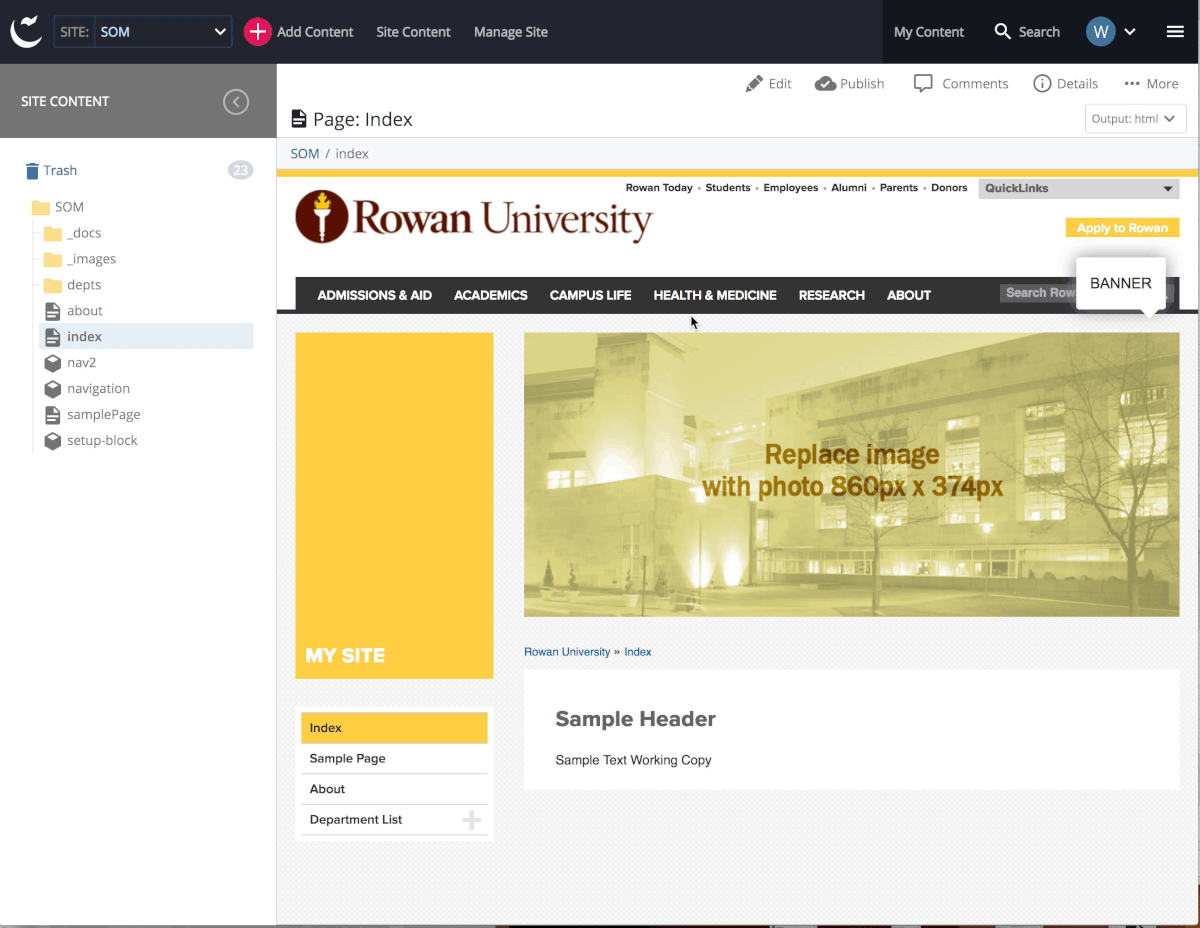
You can tag someone in the comment by typing the @ and their user name. Cascade will help you do this by searching names as you type.
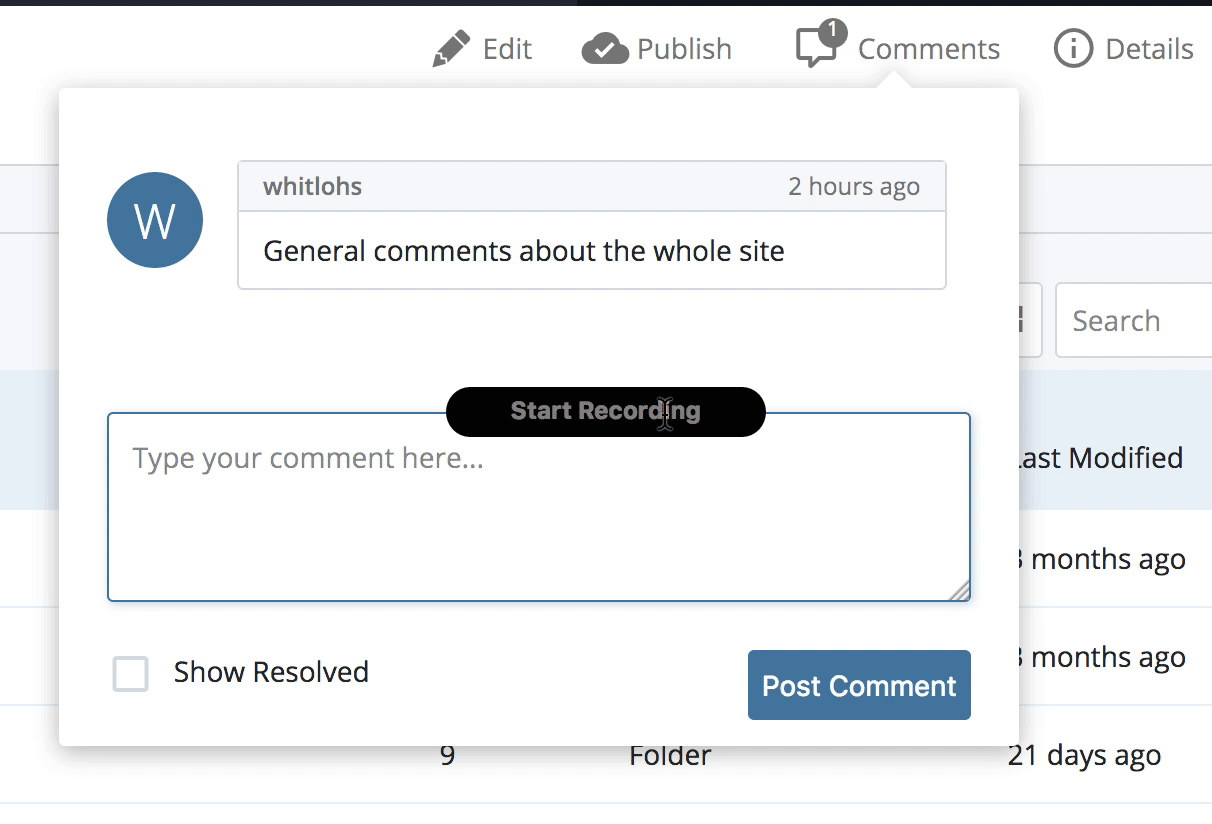
If you tagged another user, that person will find the mention in their notification list and will receive an email. Otherwise, EVERYONE will be able to see the comment when they go to that asset. This is not a place for private discussions!
Anyone with access to the asset in Cascade CMS can read, reply to, resolve, or delete the comment by clicking on the comment icon.
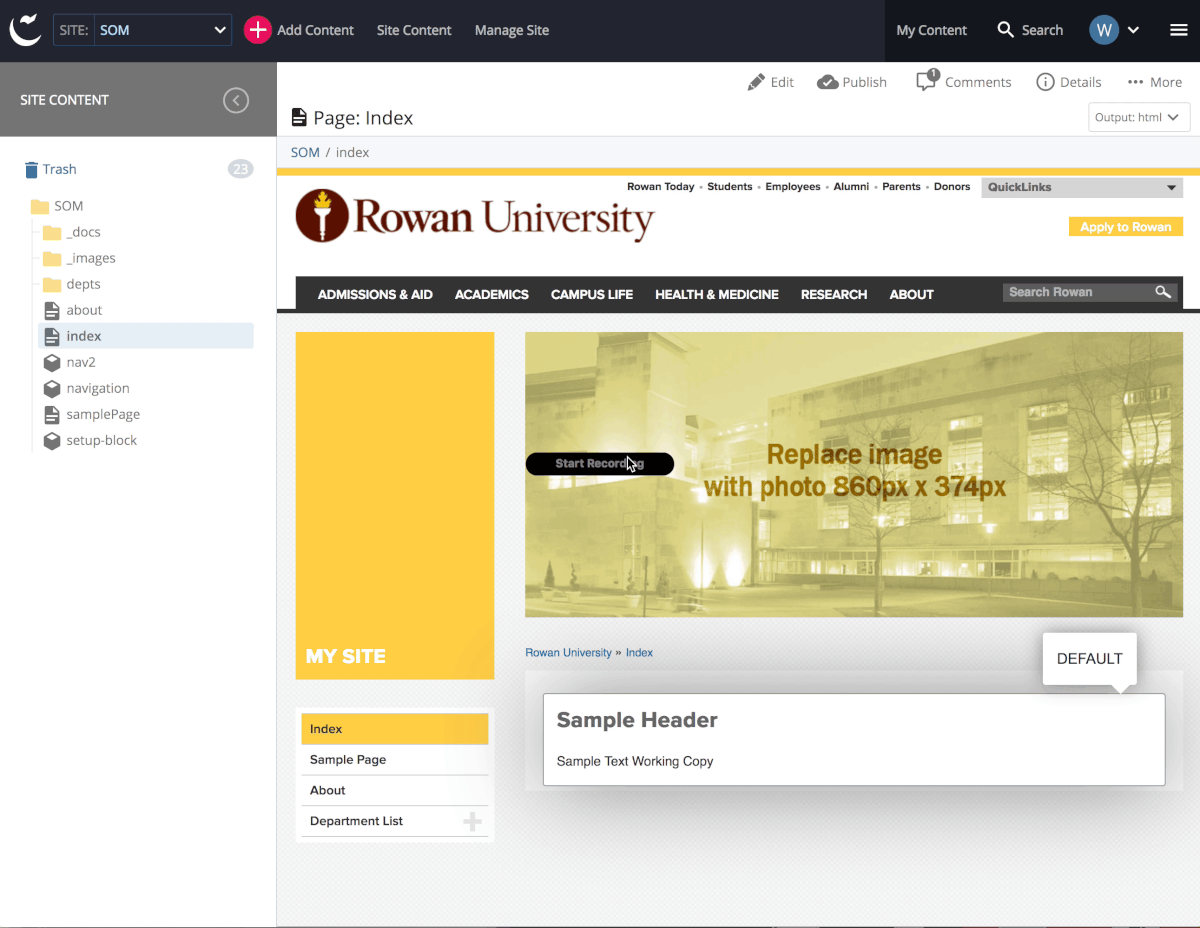
If you resolve a comment you are merely hiding it and you can reveal or hide it again using the check box below the last comment.
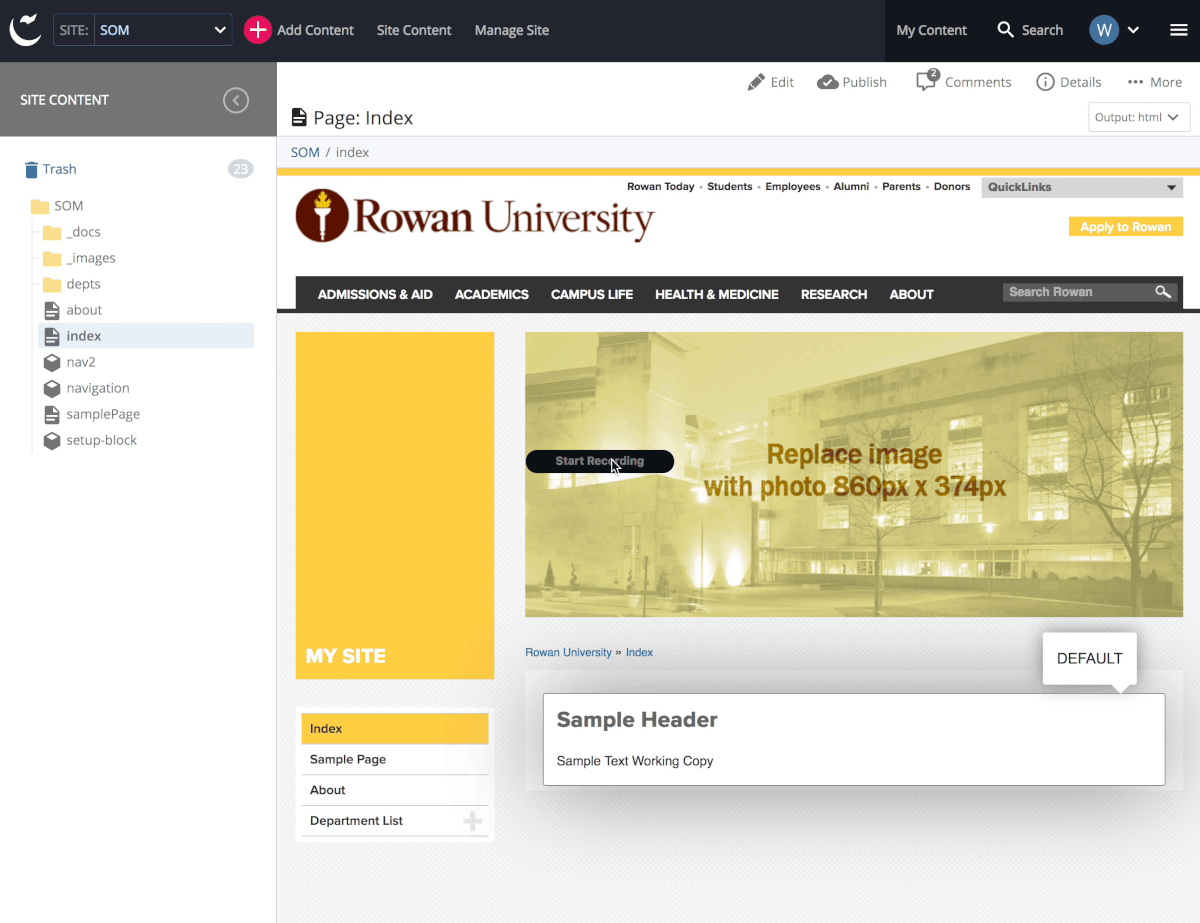
Edit/version comments
You can (and should) add comments when you submit changes to any page or asset. These are very useful if for some reason you need to roll back to an earlier revision. The more information you offer here, the easier it will be to recover changes that might have been lost. You add these in the "comment" area you see when you are about to submit an asset.
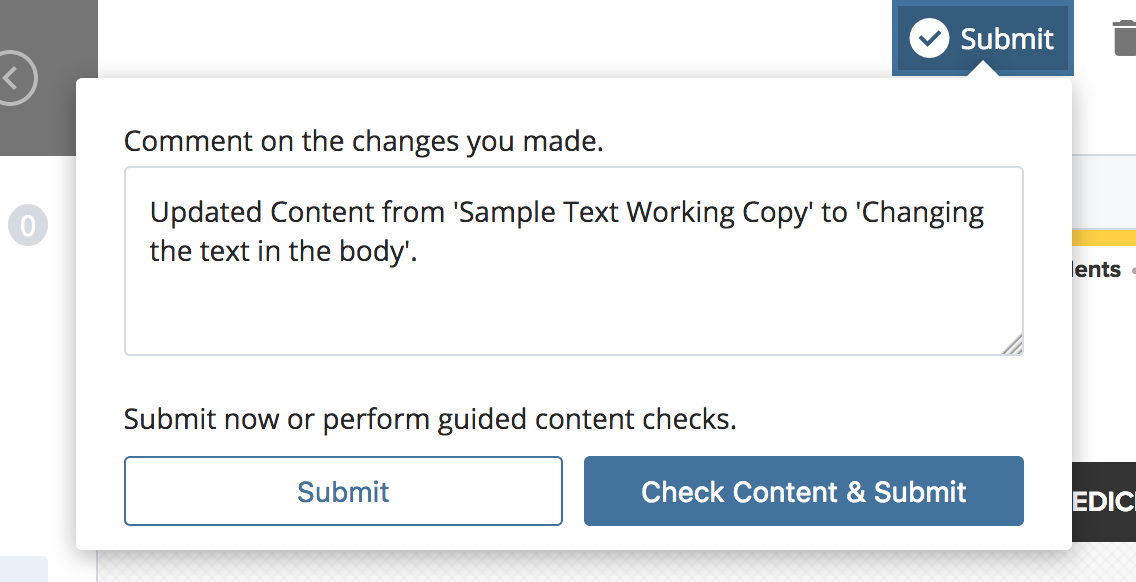
Notice that Cascade CMS has filled in the comment for me. I can add to or adjust that comment as I want.
You find these comments when you view the versions history of the asset.
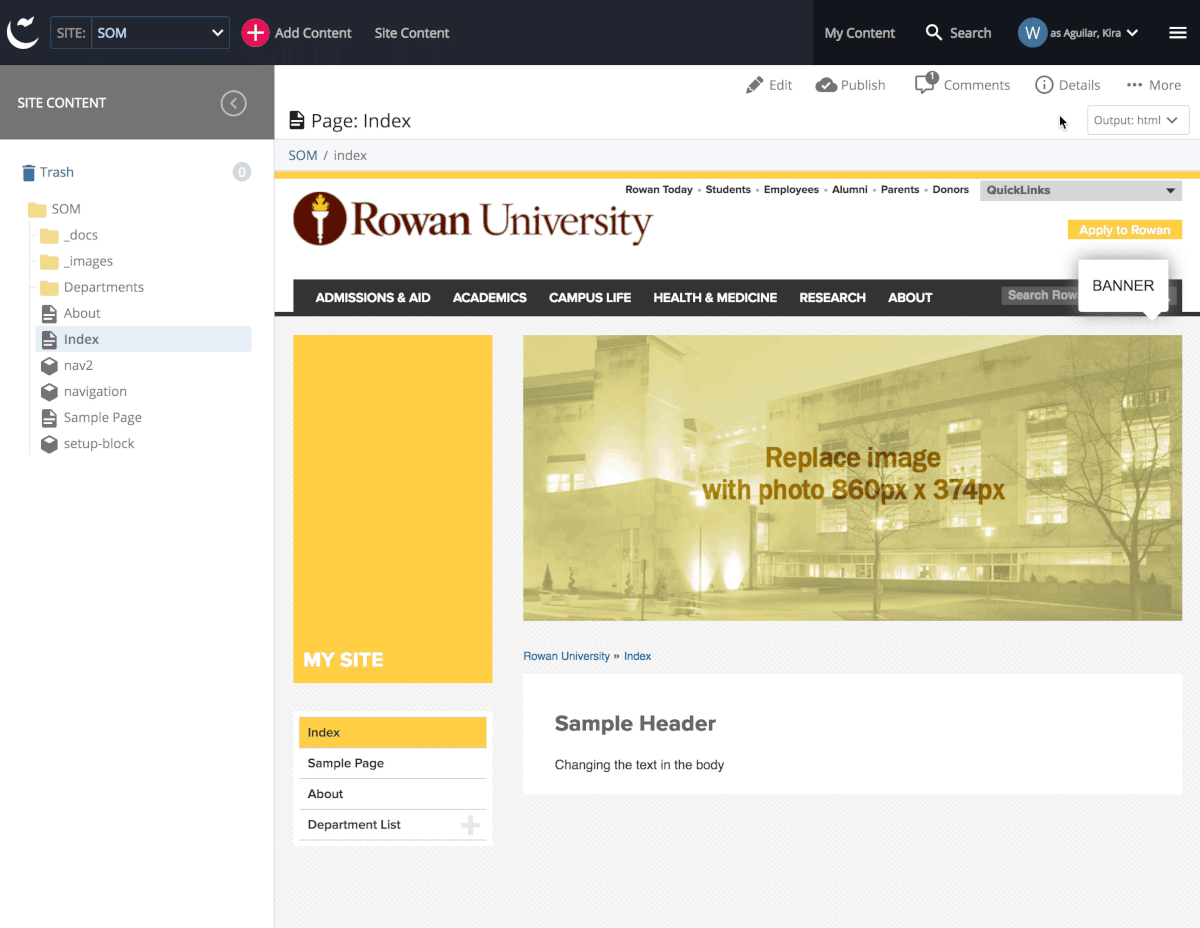
Tasks
Use tasks to remind yourself of things to do or to share work with your teammates.
Reading Tasks
You can access tasks three ways:
- From the "Task widget" on your dashboard
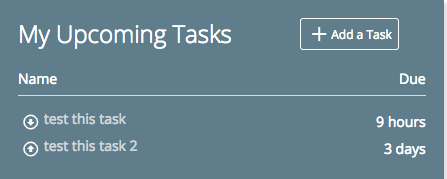
- From your own personal task list page found under your profile:

- From an asset task list found on the site menu while viewing an asset:
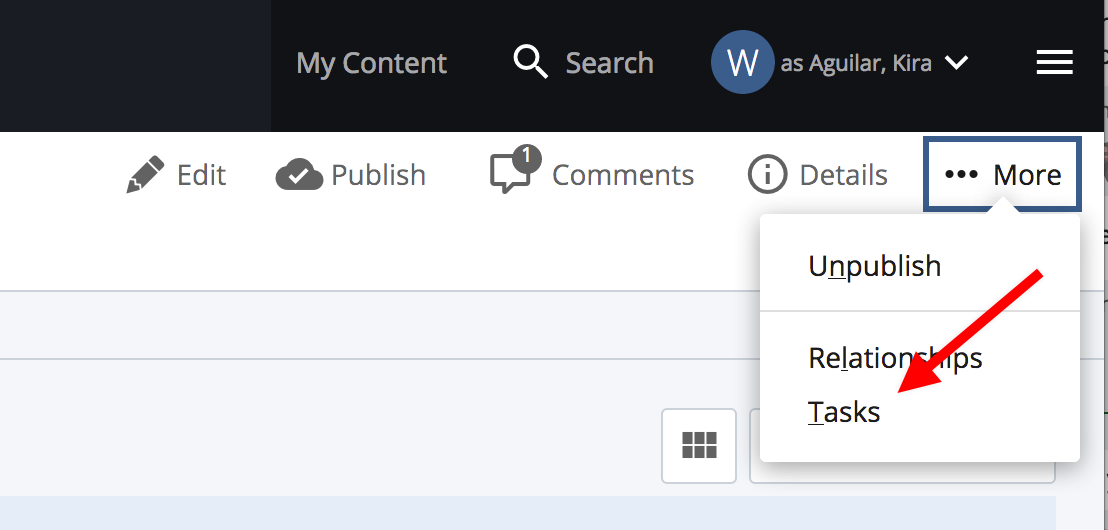
Important
- Access all tasks assigned to or added by you (whether associated with an asset or not) through your task widget or your profile.
- Access all tasks associated with a specific asset from the asset's task list.
- If a task is associated with a folder, then you must be viewing that folder to find it on the asset task list. It will NOT appear in the task list for an item inside that folder.
Creating a task
You can create a new task from:
- your task widget on your dashboard
- your task list page
- the asset task page
To create a new task:
- Click the plus (+) button either from your task page, your task widget or from the asset's task list.
- Give the task a name (Required).
- Describe the task.
- Assign the task to a user (otherwise it will default to you). This person will receive an email notification.
- Assign a due date if you like.
- Give it a priority. The priority level will affect where it appears on the assignee's or asset's task list.
- Associate the task with a specific asset. If you are creating this task from the asset's task page, your task will automatically be associated with that asset. By defining this association, you will add it to that asset's task list and give the assignee a handy link to the content from his or her task view.
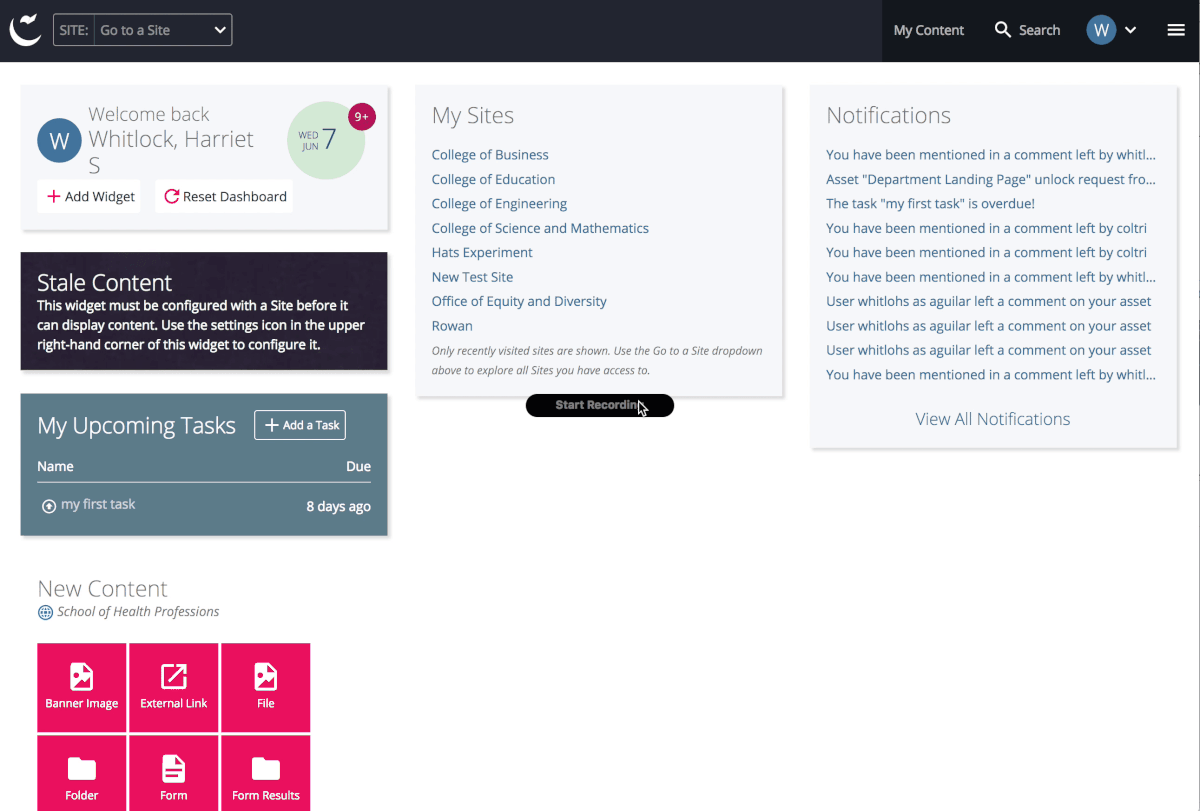
Responding to a task
When you view a task you can:
- post a reply
- edit to reassign the task
- edit to change the task message and particulars
- delete the task
- resolve the task
- resolve a comment on the task
Posting a reply to a task
In this example, the person
- views the task from the notifications widget
- posts a response
- "tags" another teammate in the post (sending a notification to that teammate)
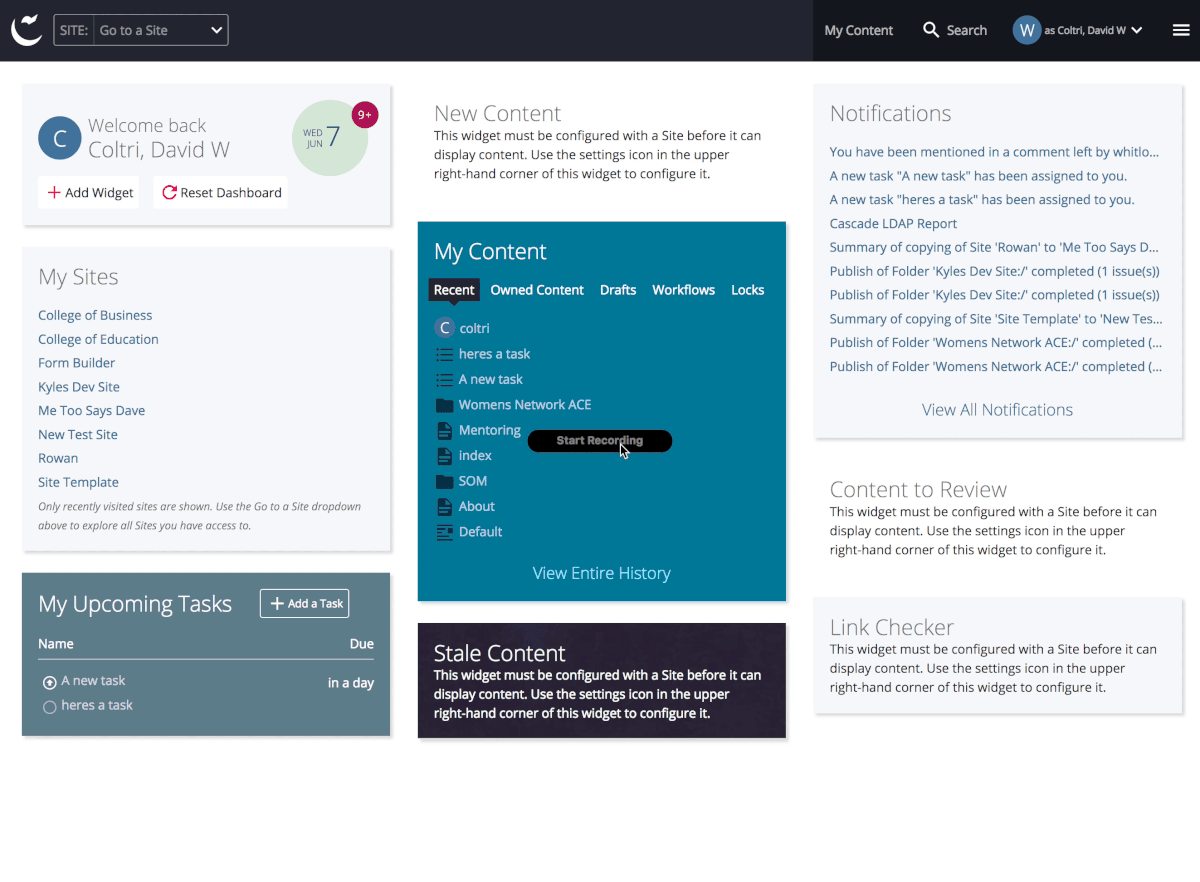
Reassigning a task
In this example the person "tagged" by the post above,
- views the task and comment
- thinks about replying to the post
- decides to edit the task to reassign it.
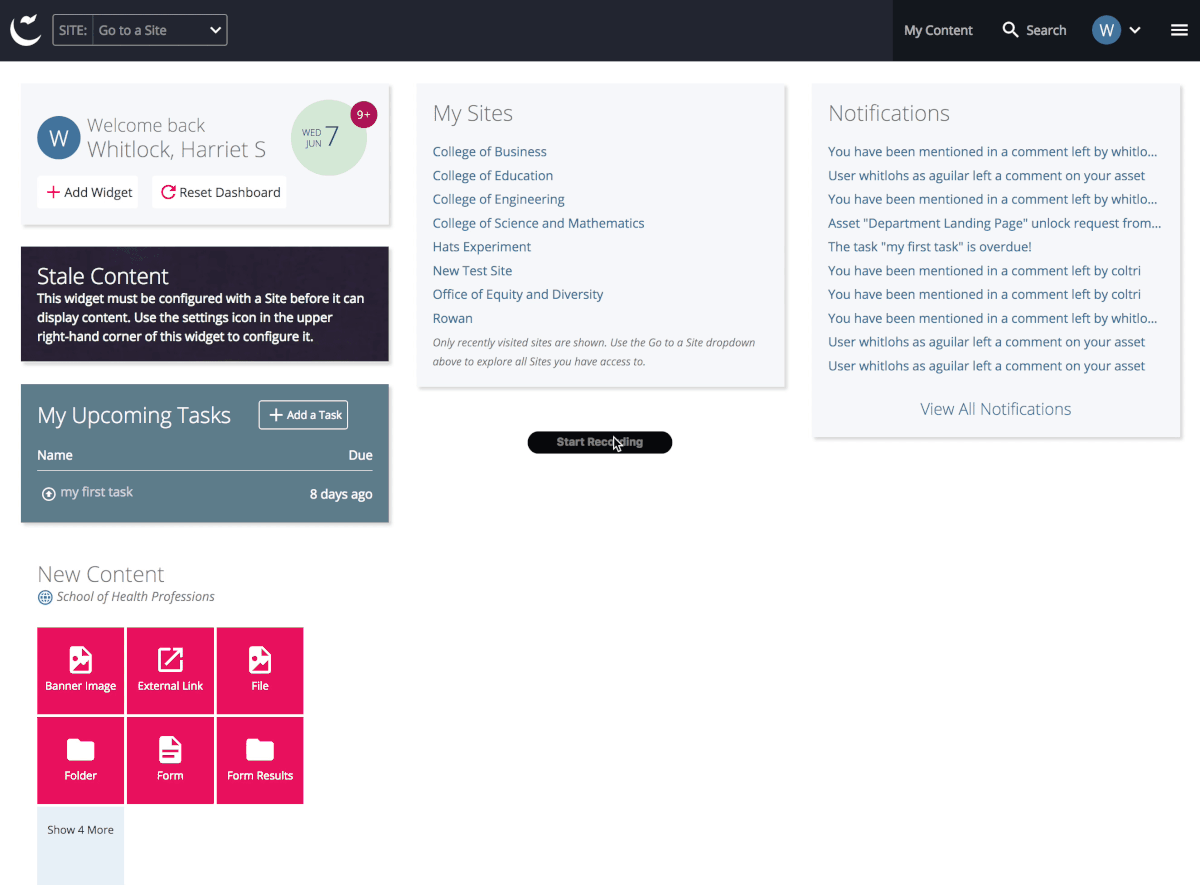
Resolving a task
When you resolve a task, it will no longer appear in the active task list or on the task widget. It will, however, live on in your completed task history unless it is reopened. In the following example an assignee
- views a task
- posts a reply to a post
- resolves the task.

Once a task has been resolved, it can be reopened by opening it from the "completed tasks" list and clicking the "reopen" button at the top of the task view.
![]()
Deleting a task
When viewing a task, you can easily delete by clicking on the "Delete" button or garbage can icon.
![]()
Once you delete a task it will no longer appear in any list and cannot be recalled or reopened.
Resolving a task comment
Comments inside of tasks work the same way that comments on assets work. When you resolve a comment on a task, the task will remain open if the task has not also been resolved. A resolved task can also have an open comment.